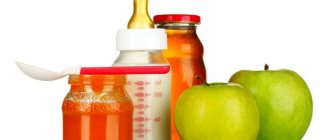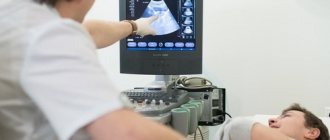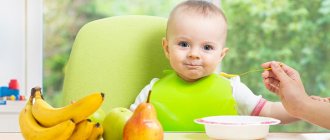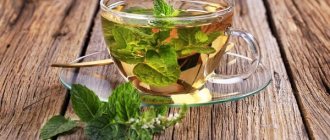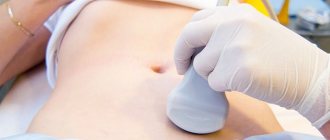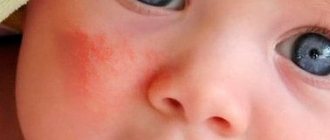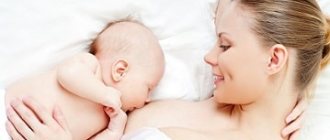After laparoscopy, the body needs to be rebuilt in order to function normally without the gallbladder. This is especially true for the digestive system, because... bile cannot now accumulate anywhere after the operation and it will directly enter the duodenum, regardless of food intake.
This may cause irritation of the mucous membranes. For this reason, there is a high risk of bile reflux into the stomach, as a result of which a person may experience discomfort and pain in this organ. Therefore, it is important to review your diet to support the functioning of the hepatobiliary region. This will have a beneficial effect on the functioning of the gastrointestinal tract.
Why is diet necessary?
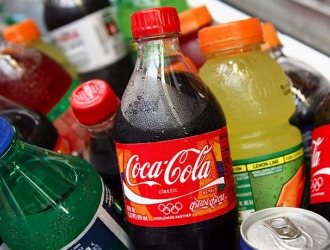
Soda will have to be eliminated
After a person’s gallbladder is removed, a chaotic flow of bile into the stomach and intestines begins. Its concentration decreases, which reduces the level of enzymes. Heavy, fatty and coarse foods cannot be processed efficiently.
This leads to the development of various pathological processes: colitis and enteritis. These diseases cause disturbances in the absorption of nutrients and vitamins and provoke the appearance of foci of inflammation in the gastrointestinal tract.
Therefore, after gallstone laparoscopy, it is important to completely review the diet so that the organs of the digestive system gradually adapt to the new conditions for processing and digesting incoming food.
It is recommended to adhere to the diet for the rest of your life, and for a year to follow all nutritional recommendations prescribed by your doctor.
After removal of the gallbladder, the patient should follow the recommendations:
- follow a diet;
- eliminate the consumption of harmful foods;
- eat strictly according to a certain plan;
- Eat foods that have choleretic properties every day.
If you follow these rules, the load on the liver will decrease, and bile will begin to be processed efficiently. The organs of the digestive system will not suffer from its excess.
Why do you need a diet?
The diet after cholecystectomy (removal of an organ) helps to facilitate the functioning of the liver system, produce the optimal amount of bile, and normalize the body’s digestive system. If you follow the recommendations, you can avoid bloating, bitterness in the mouth and constipation.
A bitter taste in the mouth appears even when the gallbladder is removed, since the presence of bile in the body remains, only this waste product of the body is excreted directly through the intestines.
Due to the optimal selection of foods on the diet after the removal of the gallbladder and fractional nutrition, the patient’s weight is stabilized, overall well-being is improved, and atherosclerosis is prevented.
Basic nutrition rules
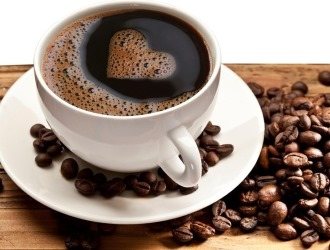
You also need to give up coffee and strong tea
It is important to strictly follow a diet, eating only certain types of foods. There are basic nutritional rules that are recommended to be followed.
- The strict diet should continue for 6 months.
- One serving of food should not exceed 200 g.
- They eat up to 5 times a day.
- Long breaks between each meal are unacceptable.
- Have dinner 2 hours before bedtime.
- It is recommended to have breakfast early in the morning.
- Fasting or following weight loss diets is strictly prohibited.
- The daily calorie content of meals should not exceed 2700 kcal.
- To prevent congestion in the liver, it is necessary to consume easily digestible fats. You need to eat 2 tsp of vegetable or olive oil per day. They are added to dishes.
- To avoid stone formation, you need to monitor your weight.
- You need to drink up to 2 liters of water per day. Preference should be given to mineral water.
- It is recommended to give up coffee and strong tea.
- Food is consumed strictly at the same time. Thanks to this, the liver will get used to producing bile at a certain time.
- Dishes must be subjected to minimal heat treatment.
- All dishes are eaten warm.
Nutrition menu for 7 days
| Diet menu for the week | ||
| Day of the week | Eating | Dishes and products |
| Monday | After waking up | A cup of green tea, a cracker. |
| Breakfast | Mashed potatoes with a piece of boiled shredded chicken. | |
| Lunch | Low-fat cottage cheese - 100 g. | |
| Dinner | Boiled chicken fillet soup with vegetables, kefir and biscuits. | |
| Afternoon snack | Compote, crackers. | |
| Dinner | Steamed vegetables with fish, apple compote. | |
| Second dinner | Yogurt without fillers | |
| Tuesday | After waking up | Kissel or glass of water |
| Breakfast | Semolina porridge with milk and raisins, white bread, green tea. | |
| Lunch | Yogurt | |
| Dinner | Green buckwheat porridge, boiled fish, carrot and apple juice. | |
| Afternoon snack | Cheese casserole. | |
| Dinner | Vegetable stew, a piece of boiled meat, green tea. | |
| Second dinner | A cup of low-fat kefir, biscuits. | |
| Wednesday | After waking up | Yogurt |
| Breakfast | Cheesecakes with raisins, green tea. | |
| Lunch | Carrot casserole, cherry compote. | |
| Dinner | Borscht, rice porridge with chicken meatballs, dried fruit compote and biscuits. | |
| Afternoon snack | 1 banana | |
| Dinner | Boiled fish with millet porridge, jelly. | |
| Second dinner | Cottage cheese with raisins. | |
| Thursday | After waking up | Dried fruit compote, biscuits. |
| Breakfast | Protein omelet from 2 eggs, weak tea, maybe a cracker | |
| Lunch | Yogurt, apple. | |
| Dinner | Vegetable soup, mashed potatoes with lean meatballs, green tea. | |
| Afternoon snack | Kissel, a piece of white bread. | |
| Dinner | Vegetable stew with the addition of chopped chicken, jelly. | |
| Second dinner | Cottage cheese with banana. | |
| Friday | After waking up | A glass of juice or jelly |
| Breakfast | Rice porridge with water, dried fruit compote. | |
| Lunch | Kissel, biscuits. | |
| Dinner | Pumpkin puree soup. Steamed fish cutlets. Apple compote | |
| Afternoon snack | Low-fat milk, homemade white bread crackers. | |
| Dinner | Vegetable stew with a piece of boiled chicken. | |
| Second dinner | Yogurt. | |
| Saturday | After waking up | Fresh apple, cherry compote. |
| Breakfast | Millet porridge, steamed chicken cutlets, dried fruit compote. | |
| Lunch | Baked apple with cottage cheese. | |
| Dinner | Soup with rice, buckwheat porridge with chicken, green tea, white bread. | |
| Afternoon snack | Banana and apple salad, jelly, biscuits. | |
| Dinner | Beetroot vinaigrette with sunflower oil, white bread, apple compote. | |
| Second dinner | Kefir | |
| Sunday | After waking up | Green tea |
| Breakfast | Semolina porridge with low-fat milk with raisins, compote of your favorite berries | |
| Lunch | Kissel, white bread croutons | |
| Dinner | Cauliflower soup. A piece of boiled chicken. Carrot Banana Smoothie | |
| Afternoon snack | Yogurt or 1 glass of kefir | |
| Dinner | Rice porridge, steamed fish. Green tea | |
| Second dinner | Yogurt. |
Diet in hospital
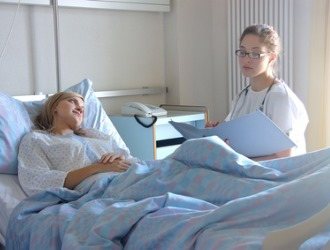
To prolong the effect of anesthesia, you should neither drink nor eat for the first 6 hours after surgery.
It is very important to eat properly in the first days after surgery. The nutrition algorithm looks like this:
- During the first 6 hours, it is strictly forbidden to eat or drink. If you have dry mouth, lightly moisten your lips with a sponge and water.
- After 6 hours and throughout the day, you can drink water at room temperature, 5 sips every 15 minutes.
- After 24 hours, you are allowed to take low-fat kefir, jelly, liquid porridge with water, and soup made from grated vegetables. Food is taken every 3 hours.
- Over the next 2 days, eat light meals with easily digestible fats. They eat fish and meat, liquid soups, jelly, and fermented milk products.
- At the end of the week, six meals a day begin. You are allowed to eat porridge, steamed omelet, cottage cheese, fish and boiled chicken, and grated vegetables.
- After a week, they move on to the second stage of dietary nutrition, if the doctor considers that the condition after the operation is satisfactory.
Example of a daily menu after gallbladder removal
A patient whose gallbladder has been removed can use a standard daily menu to create a rough meal plan for the week:
- For breakfast, it is recommended to prepare hearty buckwheat porridge, in which you can add homemade butter. As an option - an omelet from one egg with a spoonful of milk (in a double boiler); from liquid, it is good to start the day with chicory with milk without fat;
- Rice and pumpkin pudding and herbal tea are prepared as a snack;
- For lunch, prepare pureed zucchini and carrots, thick vegetable soup with rice, you can make cutlets from turkey fillet, pear jelly;
- After lunch, a snack can be a glass of low-fat fermented baked milk and a couple of low-fat biscuits;
- for dinner, the best option would be a casserole of low-fat cottage cheese, steamed hake (fillet), a decoction of rose hips with a spoon of honey;
- Before going to bed, if you feel hungry, you can drink a glass of kefir or compote left over from lunch.
Read also: Diet rules for gallbladder dyskinesia
The first month of the diet
This is the main period of time for the complete restoration of high-quality functioning of the gastrointestinal tract. During this period, the patient was given slight relaxations in food intake, some restrictions were lifted, and the list of products was expanded. The main thing is to stop using:
- alcohol;
- spicy food;
- smoked meats;
- fried foods;
- fatty foods;
- seasonings and spices.
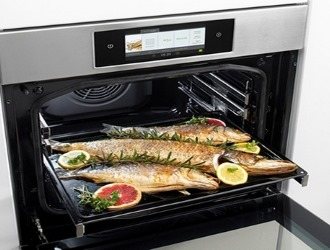
Needs to be cooked mainly in the oven or steamed
The menu includes:
- boiled, baked or stewed fish and meat;
- cutlets, cabbage rolls that can be boiled or stewed;
- vegetable-based soups;
- cottage cheese;
- mashed potatoes;
- porridges cooked with milk;
- baked and stewed vegetables;
- jelly;
- compotes.
It is recommended to grind rough food in a blender or using a meat grinder. This applies to meat products and vegetables. Patients can make their own menu, following all the recommendations. The nutrition algorithm is as follows:
- They have an omelette for breakfast.
- For second breakfast you can eat semolina porridge with milk.
- They have lunch with boiled ground meat and vegetables.
- For an afternoon snack, you can eat applesauce.
- Drink jelly for dinner.
What foods are allowed after gallbladder removal?
When hot, you can prepare creamy soups and pureed vegetable soups (in the list of permitted products). Porridge containing lipotropic compounds will help diversify the side dish. Such food is extremely important for ease of digestion by the stomach. Bread made from wheat flour is changed to dry or daily, you can make toast or crackers, unsweetened baked goods, baked goods are completely excluded.
Fish and meat
What kind of fish can you cook after removing the gallbladder? These are pollock or cod, hake or hoki, pike perch, pike, ice fish. Carcasses can be either whole or in the form of minced meat, from which cutlets, rolls or meatballs are made. By adding grains or noodles, you can make a casserole or soufflé.
Meat for patients whose gallbladder has been removed is allowed only lean varieties - veal, beef, poultry fillet - turkey or chicken, as well as rabbit. Any bird must be skinned when cooking.
Fresh vegetables
You can eat potatoes and Jerusalem artichokes, pumpkin and zucchini, broccoli and cauliflower, carrots and beets. All vegetables must be thermally processed.
Berries, fruits
It is important to know!
78% of people with gallbladder disease suffer from liver problems! Doctors strongly recommend that patients with gallbladder diseases undergo liver cleansing at least once every six months... Read more...
All sweet berries can be used as infusions or compotes, jellies or jelly, puddings, purees or soufflés. You can bake them in the oven. The most popular in this category are oven-baked apples. Products for jelly or jelly can be frozen or dried.
Read also: List of healthy raw vegetables and fruits after gallbladder removal
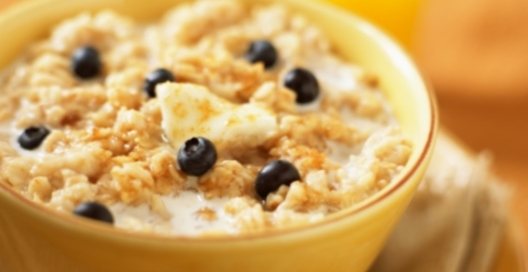
Fats
The diet must include foods with vegetable fats. In diet No. 5 these are oils: walnut or corn, flaxseed or sunflower, grape seed or pumpkin seeds, soybean or sesame. Butter should be unsalted and added only after cooking.
Groats
Among all products, there are no prohibitions among cereals. The most useful of them are buckwheat, brown rice, pearl barley, semolina and oats.
Sweets
Any jam or preserves are allowed to be consumed only if made at home. You can eat marshmallows or honey, marmalade or marshmallows, but in very small quantities and not every day.
Dairy products and fermented milk
Fermented baked milk or yogurt, kefir or acidophilus - these dairy products will help digestive processes and also normalize stool. It is allowed to consume low-fat cottage cheese and sour cream with no more than 15% fat in limited quantities after the first month and a half after surgery.
Chicken eggs
The patient can eat only 1 egg per day, and the best method of preparation is a steamed white omelet or with the addition of a yolk. It is permissible to add an egg during cooking.
Beverages
In cases where the gallbladder has been removed, the most useful drink is a decoction of rose hips, tea, preferably green, chicory or weak coffee with whole milk in small quantities, compotes of dried fruits or fresh berries, jelly or juices with added water.
Further diet
| Prohibited Products | Authorized Products |
|
|
After a month, it is recommended to switch to therapeutic diet No5. It does not have strict restrictions. A person should only avoid eating prohibited foods.

Nutrition rules
Prohibited
- Cold (from the refrigerator) foods and drinks (even if recommended in the diet);
- Fried foods;
- Dishes where bouillon cubes are added;
- Spicy dishes. Spicy snacks, canned food, smoked sausage, red caviar.;
- Fatty meats (pork, lamb), fatty poultry (goose, duck);
- All fried foods, canned meat of ordinary preparation;
- Liver, kidneys, brains;
- Sturgeon, stellate sturgeon, beluga, salmon, catfish and other types of fatty fish;
- Salted smoked products (balyk);
- Conventional canned food;
- Chum salmon caviar;
- Yolks and whole egg dishes;
- Pork, beef, and lamb fat;
- Ghee, lard;
- Sharp cheeses, feta cheese, full-fat cottage cheese, cream, full-fat milk;
- Meat and fish broths and any soups based on meat and fish broths;
- Roasting vegetables for soups;
- Excessively fatty soups, green cabbage soup made from nettle, spinach, sorrel;
- Sauces based on meat and fish broths with toasted flour; horseradish, mustard, pepper, garlic;
- Freshly baked and rich bread;
- Compact flour dishes: pancakes, pancakes, donuts, pies, kulebyaki, etc.;
- Butter dough;
- Pastries, cream pies, fatty cookies;
- Any fried: Sorrel, spinach, asparagus, legumes, tomatoes, tomato, radish, radish;
- All citrus fruits, grapes, pineapples;
- Cold drinks, iced drinks;
- Carbonated drinks, champagne, beer, spirits;


